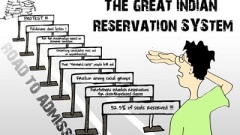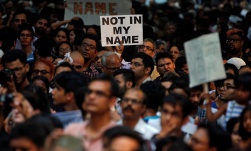Today, 15th of August, 2018, we are celebrating India’s 72nd Independence Day. 72 years ago India got rid of the British clutch which gripped the sub-continent for close to 200 years, took innocent lives, saw sacrifices of all order, divided one country into two and most importantly planted the seed of hatred in the country. We celebrate this day in the loving memory of the warriors of our nation who fought with violence, non-violence and sometimes both. We celebrate this day because we became free, and we could finally write our own constitution. We celebrate this day because we kicked out the foreigners who ruled us and started doing it ourselves. We celebrate to recall ourselves that we are in a free country and we have few ‘Rights’ written in a huge book called, ‘The Constitution of India’. The rights are supposed to be exercised , the rights are supposed to be enjoyed by one and all.
Well, on this auspicious occasion let us remind ourselves about our Fundamental Rights and how are we supposed to exercise them.
According to the big book, we are guaranteed with major fundamental rights, those are:
- RIGHT TO EQUALITY:- The phrase in itself tells all about what the right is meant and what it guarantees. (Guarantees???) According to the Articles 14,15,16,17 & 18 of Indian Constitution every Indian citizen has the right to be seen and judged equally before law. Every Indian citizen must have the access to all other fundamental rights and everyone should be able to exercise them.
 But what if I ask you, Reservation System based on Caste, is that equality? Ignoring women and not considering them as good as men in all spheres of the society, is that equality? Well, these questions are seeking their answers for quite a few decades now, answer seems to hide behind the political and non-political agenda and motivations.
But what if I ask you, Reservation System based on Caste, is that equality? Ignoring women and not considering them as good as men in all spheres of the society, is that equality? Well, these questions are seeking their answers for quite a few decades now, answer seems to hide behind the political and non-political agenda and motivations.
- RIGHT TO FREEDOM:- Freedom is what our warriors fought for and sacrificed their lives. The sense that we are residing in a free country makes us feel strengthened and empowered. Am I right? Well, I wonder, when I read the Article 19,20,21A and 22 of Indian constitution and then look towards the society I live in, I find the contrast is sharp and sometimes makes me ask a question to myself, why are we celebrating Independence Day if we are not free yet?
 According to our constitution we are guaranteed the Freedom of speech and expression,freedom to form associations, freedom to practice any profession and so on, but the freedoms are only good for the book as one needs to face a number of restrictions while exercising these.
According to our constitution we are guaranteed the Freedom of speech and expression,freedom to form associations, freedom to practice any profession and so on, but the freedoms are only good for the book as one needs to face a number of restrictions while exercising these.
The oppressed cannot question the oppressors, or assembling peacefully may question your nationality! And so on! Where is the freedom and what for are we celebrating this day?
- RIGHT TO LIFE:- One of the most important ‘Rights’ according to the book ‘Right to Life’ is well written but not very well practiced. The right essentially says that every individual in this country has the right to life and personal liberty, which means your liberty or your freedom to live is protected by law until and unless you commit a crime.

With this, I get reminded of how brutally few innocent Indians were lynched by mob for they believed that either the people they were lynching were child-lifters or they slaughter ‘religious animals’ for food or probably they belong to a religious minority. But Law and the big book is silent as there is no mention for any punishment against mob crimes, then how does this ‘Right’ still finds a place in the book?
- RIGHT TO FREEDOM OF RELIGION:- The preamble of the Indian Constitution boasts of religious equality and secular principles. According to the Constitution of India all religions are equal before the State and no religion should be given preference over the other. The book also says that the citizens are free to preach, practice or propagate any religion of their choice. It sounds like a fairy tale today to see my society preaching, practicing and propagating any religion of their choice, and also seeing that no religious belief is awarded preferences.

Couple of weeks back 8 villages were renamed in Rajasthan which had ‘Muslim’ names! This is one of the endless number of examples. The question is out in open, and it is to you? What has went so wrong with the religious minorities that instead of supporting their causes the State aims at preferring another religion. Isn’t that defying the Constitution?
These are some of the major rights that the Constitution of India mentions and assures that the State must make sure the effective exercise of these rights. The present scenario doesn’t look even close to that, the rights and the mentions of freedom are just golden words to be preserved with the book but following it and ensuring that the nation is guaranteed to be able to utilize the rights is a far-fetched dream , at least now. In the end, my question to you is, do you think you are still Independent and free? Ask yourself!
Happy 72nd Independence Day!🎉




 Thanks for joining me!
Thanks for joining me!